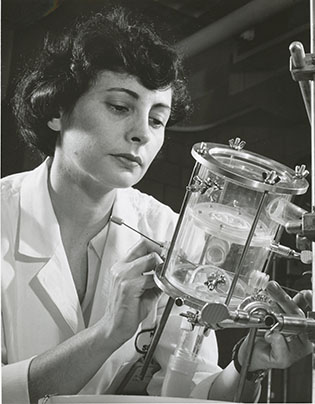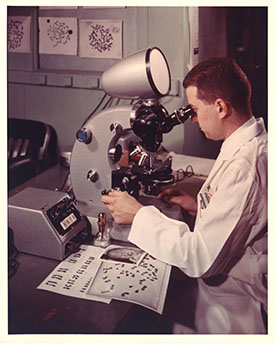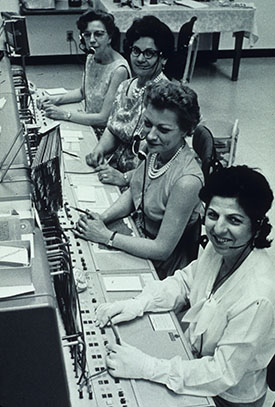From the Annals of NIH History
NIH Female Surgeon, A Pioneer in Heart Surgery

PHOTO BY: JERRY HECHT
In 1960, Nina Starr Braunwald, who was the first woman to be board-certified as a cardiac surgeon, led the NIH team that was the first to replace a human mitral valve (which she also designed). She went on to develop a cloth-covered mechanical valve (the Braunwald-Cutter valve), which was implanted into thousands of patients during the late 1960s and early 1970s; the stented aortic homograft (a graft of same-species tissue) for mitral valve replacement; a surgical treatment of chronic thromboembolic disease; and pioneering techniques for the use of tissue cultures to discourage the formation of clots when prosthetic valves and circulatory assist devices are in use. Braunwald worked at the National Heart, Lung, and Blood Institute from 1958 to 1968; then she moved to the University of California, San Diego (1968–1972) and later to Harvard Medical School (Boston). In the photo, she is shown adjusting a test chamber holding an artificial heart valve.
NIH Photographer Jerry Hecht
The photographer, Gerald “Jerry” Hecht (who died on November 24, 2016, at the age of 88) worked at the NIH from 1959 to 1987. His unmistakable skill, coupled with a trusted access to NIH surgical units and labs and even the White House, captured the remarkable achievements of the NIH during a period of spectacular growth and rise in prominence. He also took hundreds of photographs of everyday life at the NIH, from telephone operators and mechanics to nurses and patients. He had a hand in producing NIH films in the early 1970s, too. His work is an invaluable part of the NIH's cultural heritage. Many of his photos appeared in Time, Life, and other prominent publications. To see examples of his work, check the Office of NIH History collection page and the National Library of Medicine’s digital repository (https://collections.nlm.nih.gov). You can read an article about his retirement in the July 28, 1987 issue NIH Record (page 10). In addition, you can read his obituary in this issue of the NIH Catalyst.

PHOTO BY: JERRY HECHT
Scientist counting chromosomes. Laboratory research on chromosome studies in the 1960s.

PHOTO BY: JERRY HECHT
Clinical Center telephone switchboard operators. The Clinical Center equipped a 24-hour service to handle calls from around the USA. The switchboard opened on January 30, 1953.
This page was last updated on Monday, April 11, 2022
